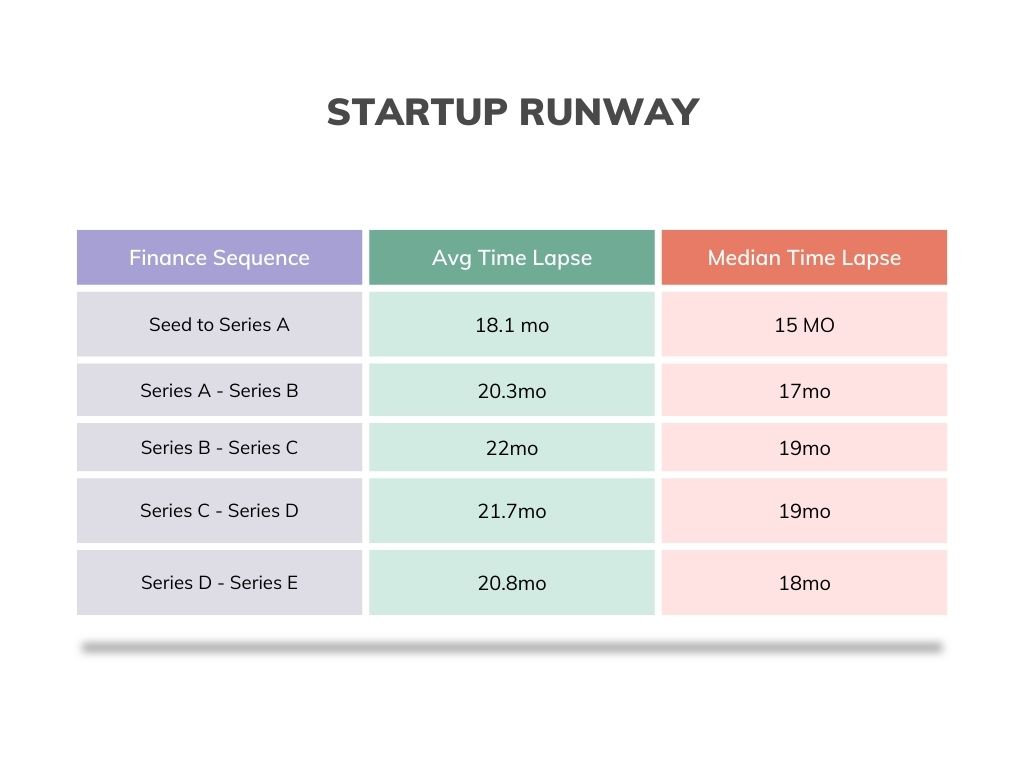Figuring out how long your startup can survive is both an important and stressful task for all founders. When you have your startup runway pinpointed, you can operate within the actual financial means of your startup without risking bankruptcy or sudden folding due to a lack of funds.
At times, startups can reach a point where they need a longer runway than initially predicted. There are ways to extend startup runway without hitting the panic button.
In this article, we’ll discuss runway, how to calculate it, and how to extend your runway.
What is startup runway?
Runway, by direct definition, is the number of months a company has before the company is out of cash. Runway for startups varies based on the amount of money gained through investors or loans, but it is essential for all founders to know.
Cash runway begins when you no longer actively receive money from investors or loans but haven’t made any income. You can plan out critical financial decisions by calculating runway, setting cash reserves, estimating needed cash flow, and creating a tangible budget.
How calculating runway benefits startups
Giving your startup a timeline can feel like giving your company a doomsday date, but runway is a valuable tool. If you’re considering raising more venture capital later down the line, you have an accurate read on how much more money your company should raise once your runway nears its end before it happens.
Instead of focusing on long-term financial goals, calculating runway gives you a month-to-month picture of what your finances need to look like. Short-term financial goals are easier to tackle, especially if your startup runs with a skeleton team or without an accountant. You can calculate the necessary income and gross burn rate monthly, giving your team a pinpointed budget.
How to calculate runway
Calculating runway is dependent on your burn rate. Both numbers are a necessary financial duo every founder should be familiar with. To find your startup runway take the current cash balance and divide it by your burn rate. You want to use your end cash balance for the period you’re gathering runway.
Cash balance ÷ burn rate = runway.
Want to learn more about burn rate? Read our article here.
How much runway should a startup have?
Runway planning comes down to accomplishing financial steps to take your company over key milestones that draw more investors’ interest. The more raised capital at your disposal, the longer your runway extends. Raising enough for an added layer of cash padding when unforeseen issues arise (take 2020, for example) should be a second goal.
The amount of runway is dependent on where your startup is in funding, expenses, and allocation of company money. On average, seed startups should aim for 12 to 18 months of runway.
Runway does not include plans to raise capital. If you have fundraising plans for the future, the tail end of your runway should be adaptable. Running through cash reserves before fundraising can be dangerous and lead you to take unfavorable deals from investors out of necessity.
Experts at FIU conducted a study to determine the necessary length of runway startups should aim for depending on their status.

How to extend your runway
While the math behind calculating runway is dependable, it isn’t a set-in-stone timeline. A lot of things can happen that affect a startup’s financial standing. Production of services can exceed budgets, investors can fall through, and all the other circumstances you’ve probably stayed up worrying about could happen.
That’s why we suggest padding your runway. Whether you’ve already found your desired runway or are looking into it now, these tips are great for all founders to have in their toolkit.
Cut out non-essentials
Can you and your employees operate from home for now? Put off renting an office. With the rise in popularity of remote work, going without an office is no longer taboo, especially in the startup world.
Payroll is always a considerable portion of a financial budget. Don’t strain your company by building out your team too quickly. You can defer the cash saved to your runway if you can trim down payroll and space renting.
Be transparent with investors
Don’t undersell the money necessary for your startup to take off or be afraid to let investors know when you’re struggling. Investors are willing to take a chance on your business. So even when finances are tight or there is a shift in the market, don’t risk the success of your startup by minimizing your cash burn or being upfront about costs. . Venture capitalists are there to help organize your finances and help frame out the best cost-efficient plan for your business.
Business credit cards
Don’t be afraid to expand your financial resources. Using corporate credit cards for employee expenses or large purchases keeps your period budget intact. Don’t take any card first offered without doing your due diligence, but they are a good alternative if needed.
Manage your startup runway with a real-time financial dashboard
When designing or revising your startup's financial plan, finding all the necessary information should be straightforward. An interactive, real-time financial dashboard can organize your accounting and financial information in one place. You'll be able to view transactions as they happen to avoid surprises. If a sudden financial bump occurs, you’ll be able to switch directions to extend your runway immediately.
Likewise, financial experts like Fractional CFOs can help you make sense of the numbers.
Overall, it's important to stay proactive and protect your business for the long run. If problems come up, having the right tools on hand to deal with them will keep your business going strong.










